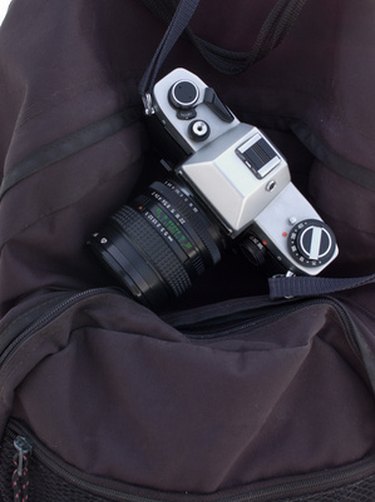
Plastic is useful for a variety of crafting and fine art projects: it is durable, can be transparent, and is available in a wide variety of colors. For these reasons, plastic often is a good substitute for glass. However, plastic can be difficult to decorate: it has a tendency to repel paint and resist most carving tools. Fortunately, you can print photographic imagery directly onto plastic with the right materials.
Step 1
Take your photograph to a copy shop and obtain a photocopy or laserjet print of it. Since the final image will be reversed, ask for a reverse print or copy if you canâ??t transfer the image onto the back of the plastic. Do not make the copy until you are ready to print the image onto the plastic, because fresh prints and copies work best for the image transfer.
Video of the Day
Step 2
Check that your piece of plastic is free of dirt and dust. If necessary, wipe the plastic with a clean, damp cloth. Dry thoroughly before continuing.
Step 3
Place the print or copy, image side down, on top of the plastic. Secure the paper in place with masking tape.
Step 4
Open your blender penâ??a craft pen filled with special fluidâ??and apply heavy, even strokes across the back of the print or copy. Work carefully to thoroughly cover the back of the print, but do not soak the paper.
Step 5
Use the back of a heavy wooden spoon to burnish the image onto the plastic. Rub the spoon firmly across the back of the copy or print in a tight, circular motion. Cover the area methodically with the spoon, making sure to burnish the entire image.
Step 6
Remove the masking tape from one corner of the paper, and slowly lift the corner to check the quality of the image transfer. If the image appears too light, replace the corner and repeat the blender marker and spoon burnishing process.
Warning
Use blender pens only in well-ventilated areas. Blender pens contain xylene, a toxic substance.
Video of the Day